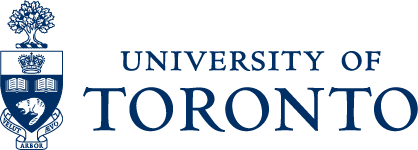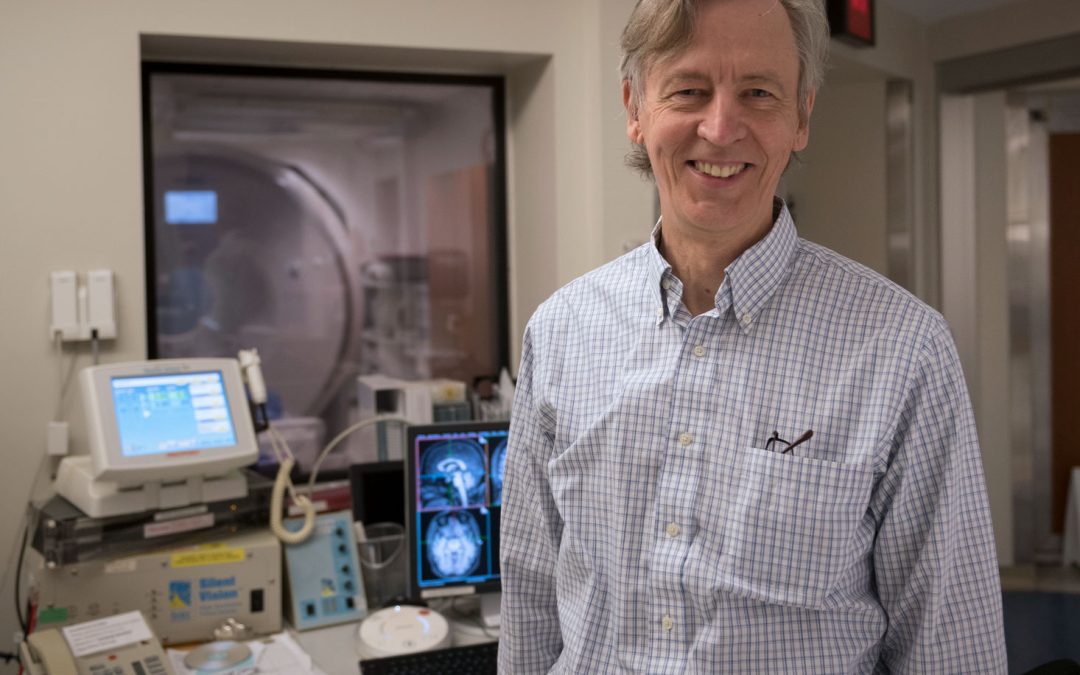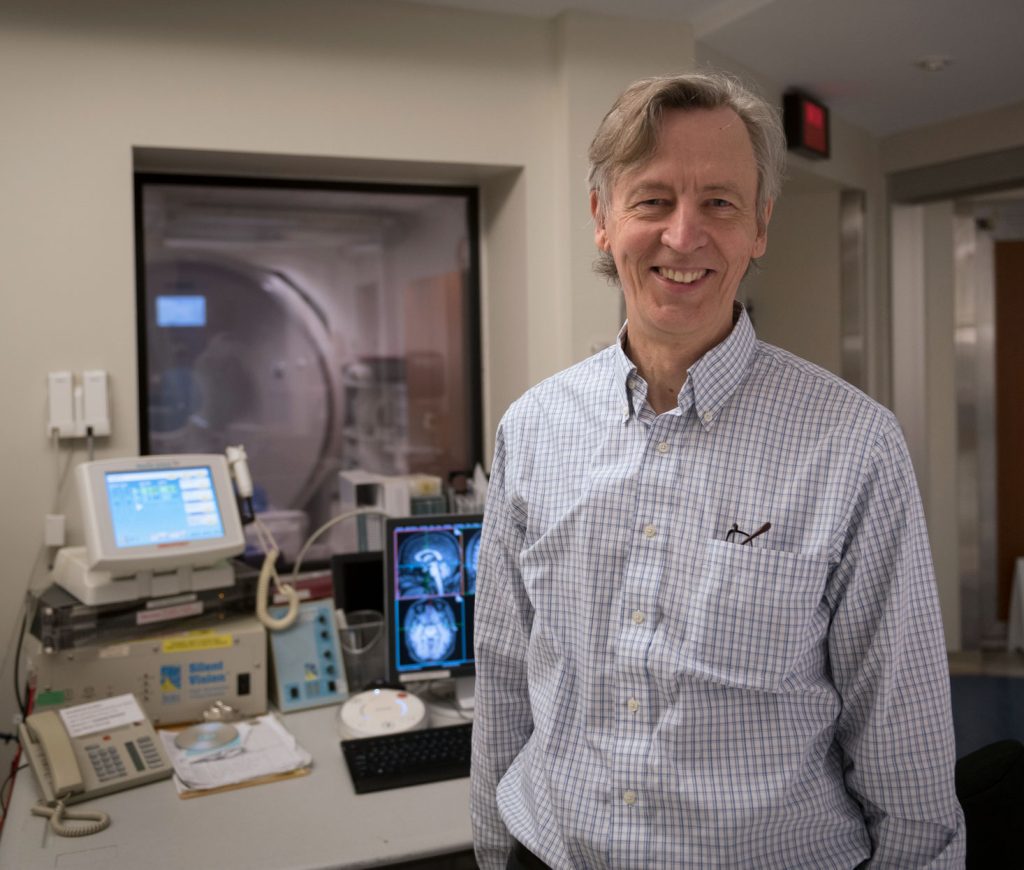Dr. Kullervo Hynynen is a pioneer in the development of focused ultrasound technology. His research and clinical work spans over two decades as he pursued his joint passion in physics and biomedicine. This combined passion has led to breakthroughs in noninvasive treatment techniques using ultrasound beams that have helped advance treatments and diagnoses in several brain diseases, including cancer, Alzheimer’s, Parkinson’s, and ALS. Photo by Kevin Van Paassen/Sunnybrook.
We are cutting the patient open, but that’s not going to be the future. You won’t need to cut the skin. Soon it will be possible, after brain surgery, to go and sail the next day, or even that same afternoon.
Understanding the Brain
Containing over 86 billion interlinked neurons that produce trillions of neural connections, all within three pounds of soft tissue, the human brain is arguably the most complex and intricate structure – not only in our respective bodies, but in the entire universe. As the crown jewel of the human body, the brain helps us act, think, feel, remember, breathe, play, love, and do just about anything – all whilst lying in a fragile, bony shell surrounded by fluid. Undoubtedly, it needs to be protected.
One mode of defence our bodies employ to protect such an important organ is the blood-brain barrier – commonly referred to as the BBB – which acts as our brain’s very own bodyguard. This semipermeable barrier is made up of a network of blood vessels and tissue that effectively blocks toxic substances, including pathogens and the diffusion of solutes in the blood, from entering our brain by filtering out harmful compounds.
Although undeniably effective, scientists and medical practitioners have faced a new problem. In recent decades, as medicine has advanced, the BBB is almost too effective. Not only does it block harmful and toxic substances, but it also blocks 97% of life-altering medications that have the potential to treat brain diseases. What to do about the BBB to ensure life-saving medications can have their intended effects has stumped medical researchers and practitioners for decades.
Breaking Barriers: The Future of Brain Surgery
That was until 1998, when Dr. Kullervo Hynynen pioneered an application of focused ultrasound (FUS) under MRI guidance to perform the previously impossible feat of focusing ultrasound through the skull, and then in 2001, to safely opening the BBB – quite literally breaking barriers. Focused ultrasound is an image-guided surgical technology that uses concentrated ultrasound energy to noninvasively target specific areas of the body. Dr. Hynynen would then proceed to spend the next two decades developing low-intensity focused ultrasound applications to safely and reversibly open the BBB, leading to numerous therapeutic and treatment breakthroughs observed in clinical settings.
Dr. Hynynen is Vice President of Research and Innovation at Sunnybrook Health Sciences Centre and a professor of Medical Biophysics at the University of Toronto’s Temerty Faculty of Medicine. He has spent the better part of 20 years studying physics and biomedical engineering, first in Finland, then later obtaining his PhD in the UK where he first explored techniques to use focused ultrasound for non-invasive surgery applications.
In November 2015, physicists and neurosurgeons at Sunnybrook noninvasively breached the BBB of a patient who was living with brain cancer, using focused ultrasound to deliver chemotherapy directly into her brain. This was the first time this procedure had ever been successfully executed anywhere in the world, marking a momentous achievement in Dr. Hynynen’s 20-year journey from inception to commercialization, culminating in its first real-world application.
Alongside Dr. Isabelle Aubert, a neurobiologist also at Sunnybrook Research Institute (SRI), and U of T, Dr. Hynynen then used the focused ultrasound technique to deliver antibodies directly into the brains of mice with Alzheimer’s, which led to a substantial shrinkage in amyloid plaques, a common indicator of the disease. Two years later in 2017, researchers and neurosurgeon Dr. Nir Lipsman at Sunnybrook again made history after successfully using focused ultrasound to open the BBB – this time in a patient with Alzheimer’s. The result is a seemingly painless, non-invasive and innovative procedure that can potentially provide the brain with access to medications used to treat diseases like Alzheimer’s, that the BBB would have otherwise blocked.
Toronto’s Bioinnnovation Ecosystem
Dr. Hynynen is quick to praise Toronto’s capacity as a hub of research and innovation, and believes its geographic and research advantage had a significant impact for his work.
“Toronto is a great place to work. We have this centre of excellence that allows us to collaborate with key industry partners and provincial funding from the Ontario government has been vital to my research,” said Dr. Hynynen. “People are eager to work through things together. I think that Toronto is one of the best places to do research – it is so easy to cooperate and people are eager to collaborate –I think that’s part of Canadian culture, that we can do things together.”
Indeed, Toronto is unique in the way its thriving ecosystem, which relies on the collaboration and mutual trust of all stakeholders, allows researchers from academic and institutional settings, across all disciplines, to cooperate on projects from inception to application.
Moving Forward
Dr. Hynynen has expressed an optimistic and ambitious outlook regarding the future of brain surgery. “It’s very primitive – what we do now with cancer therapy. We are cutting the patient open, but that’s not going to be the future. You won’t need to cut the skin. Soon it will be possible, after brain surgery, to go and sail the next day, or even that same afternoon. You can get cancer surgery in the morning and, in the afternoon, you can go and play soccer. That’s how the future of these treatments have to be- and focused ultrasound will be able to provide that.”
Dr. Hynynen has formed two startup companies to commercialize his research findings and reach patients in a more direct way. The first company, FUS Instruments, is developing image-guided focused ultrasound systems for preclinical research. It will enable more labs to conduct research into focused ultrasound, with the goal of speeding up the translation of his work into clinical settings. The second, Arrayus Technologies, is focused on developing novel focused ultrasound systems for noninvasive surgery, with the goal of producing low-cost systems that increase access to the technology.
After 20 years of developing a technology that Dr. Hynynen notes would only have drawn a few people in the “early days,” the medical world has started to take notice. Dr. Hynynen’s work exemplifies how dedication and persistence can make a profound, tangible difference. In his case, his research alters the way life-threatening brain disease is diagnosed and treated for patients with brain disease in Canada and around the world.
Dr. Kullervo Hynynen
- Senior Scientist at Odette Cancer Research Program, Sunnybrook Research Institute
- Vice President of Research and Innovation, Sunnybrook Health Sciences Centre
- Professor of Medical Biophysics, University of Toronto
- Temerty Chair in Focused Ultrasound Research at Sunnybrook Health Sciences Centre


